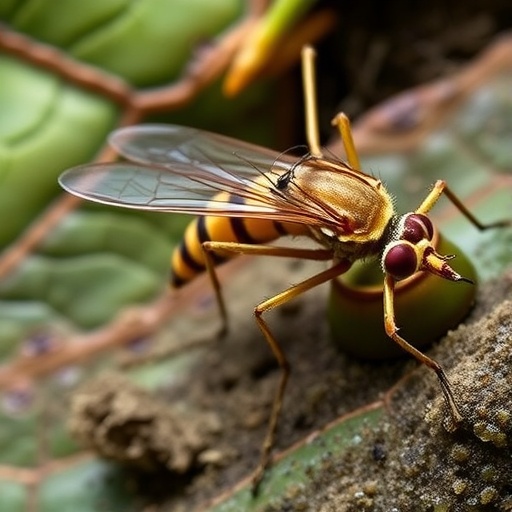An international team of scientists examining the genetic history of sea snakes have found that the species has enhanced their colour vision in response to living in brighter and more colourful marine environments.

Credit: Parviz Ghezellou
An international team of scientists examining the genetic history of sea snakes have found that the species has enhanced their colour vision in response to living in brighter and more colourful marine environments.
“Our research has found that the annulated sea snake possesses four intact copies of the opsin gene SWS1,” said PhD candidate Isaac Rossetto, from the University of Adelaide’s School of Biological Sciences who led the study.
“Two of these genes have the ancestral ultraviolet sensitivity, and two have evolved a new sensitivity to the longer wavelengths that dominate ocean habitats.
“The earliest snakes lost much of their ability to see colour due to their dim-light burrowing lifestyle.
“However, their sea snake descendants now occupy brighter and more spectrally complex marine environments. We believe that recent gene duplications have dramatically expanded the range of colours sea snakes can see.”
The team examined published reference genomes to examine visual opsin genes across five ecologically distinct species of elapid snakes. They looked at the gene data of Hydrophis cyanocinctus, or the annulated sea snake, a species of venomous snake found in tropical and subtropical regions of Australia and Asia.
The team included scientists from The University of Adelaide, The University of Plymouth and The Vietnamese Academy of Science and Technology. They published their findings in the journal Genome Biology and Evolution.
Many animals have lost opsins throughout their genealogical history as they’ve adapted to new habitats, but it is very rare to see opsin gains.
“Humans have a similarly expanded sensitivity to colours, while cats and dogs are partially colour-blind much like those early snakes,” said Mr Rossetto.
“It’s quite unique and interesting that these snakes appear to be gaining and diversifying their opsins, when other land-to-sea transitioned animals have done the opposite.”
“Basically, there’s only one other case within reptiles at all where we think this has happened.”
Newly gained colour-vision opsins have also been recorded in the semi-aquatic Helicops snake.
Evidence of colour vision in Hydrophis snakes was first published in 2020, but this new research shows it is the result of gene duplication rather than gene polymorphism. This means expanded colour vision is more common among the species than first thought.
“With a polymorphism, it’s a bit of a lottery – only some individuals would have that extended colour sensitivity. But now we know that there are multiple gene copies which have diverged, so colour vision is expected to be seen in all members of these species,” said Mr Rossetto.
Journal
Genome Biology and Evolution
DOI
10.1093/gbe/evad107
Subject of Research
Animals
Article Title
Functional Duplication of the Short-Wavelength-Sensitive Opsin in Sea Snakes: Evidence for Reexpanded Color Sensitivity Following Ancestral Regression
Article Publication Date
12-Jul-2023




